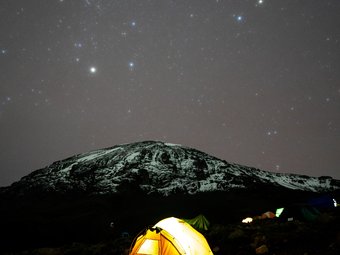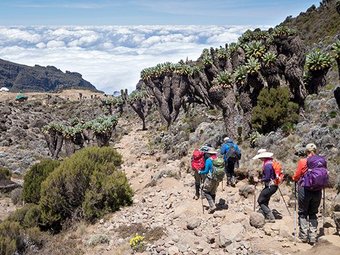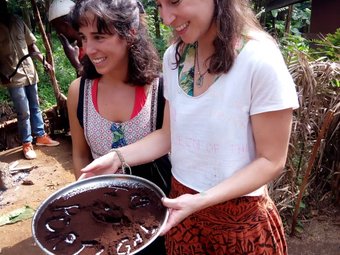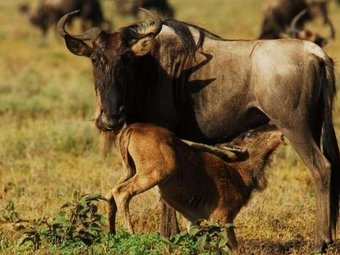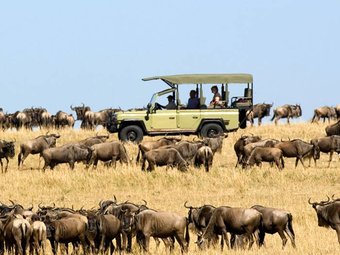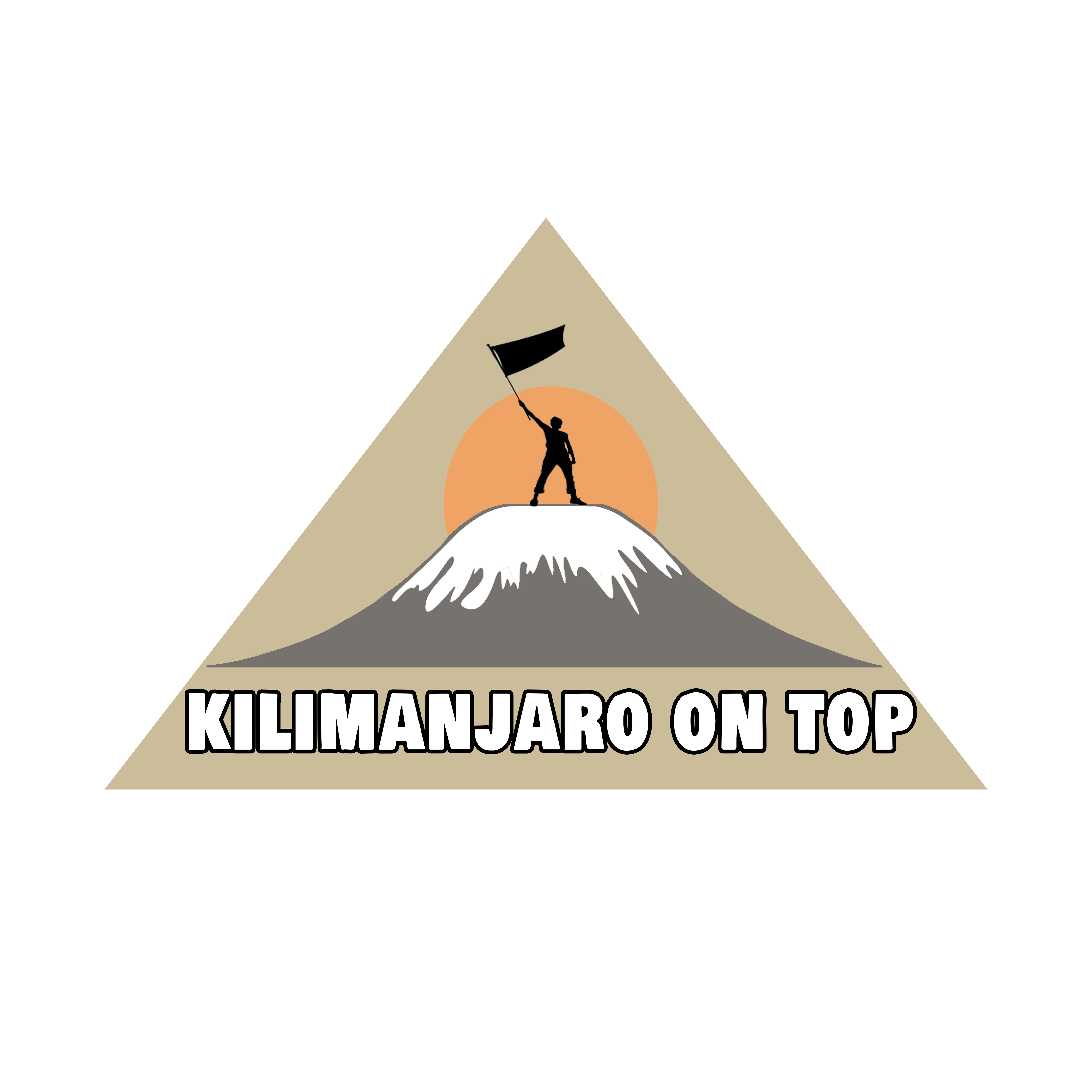Seven Days Lemosho with Kosovo
7 Days 6 Nights Kilimanjaro Climbing via Lemosho route with an overnight at Kosovo Camp.
$1681-2000 USD
pp
Safari summary
7 Days Lemosho Route Climbing with an overnight at Kosovo camp is the best for acclimatization. The remote is less used and beautiful way up to the Shira Plateau. The minimum duration for the Lemosho route is 6 days, however we strongly recommend hiking the route in 7 days. The additional 7th day will give your body more time to acclimatize, reducing the effects of altitude sickness and give you more time to rest before attempting the summit
The Lemosho route is considered the most scenic trail on Kilimanjaro, granting panoramic visitors on various sides of the mountain. As one of the newer routes, Lemosho is a superb choice for your climb. It is our preferred route due to its ideal balance of low crowds, beautiful scenery and a high summit success rate. Thus, Lemosho is highly recommended.
The lesser-known Lemosho route begins on the western side of Mt Kilimanjaro. The first 2 days of the tour cross the thick rainforest belt which then changes into heath and moorland with many ferns and ericas along the way. The small trail sometimes has very steep passages and goes through diverse landscapes. On the third day, the trail joins the Machame route. The route travers’s underneath Kilimanjaro's Southern Ice Field on a path known as the Southern Circuit before summiting from Barafu. Descent is made via the Mweka route.
On the 7-day Lemosho route with overnight at Kosovo camp, on day 5 there we trek from Karanga we pass Barafu camp direct Kosovo Camp for Overnight, allowing for a short day just prior to the summit attempt. Overnighting at Kosovo camp is important because we take a full night’s sleep and get up at our usual time, so climbers are sleep deprived going into the toughest day on the mountain. By having a short day beforehand, climbers can be better rested. The 7-day Lemosho route with overnight at Kosovo camp is highly recommended.
-What is the best time to embark on a Kilimanjaro climbing tour via the Lemosho route?
The best times are during the dry seasons, typically from late June to October and from December to March. These periods offer favorable weather conditions for a successful climb.
-How difficult is the Lemosho route compared to other options?
While the Lemosho route is challenging, its gradual ascent and diverse landscapes make it suitable for climbers with varying levels of experience. It is considered one of the more scenic and less crowded routes.
-Are there age restrictions for the Kilimanjaro climb?
While there isn't a strict age limit, climbers should be in good physical condition. It's advisable to consult with a healthcare professional before attempting the climb, especially for older participants.
-What wildlife can be encountered during the trek?
Kilimanjaro's slopes are home to a variety of wildlife, including monkeys, birds, and unique plant species. However, encounters are rare, and climbers are urged to respect the natural environment.
-Is photography allowed during the climb?
Absolutely! In fact, capturing the stunning landscapes of Kilimanjaro is encouraged. Just ensure you have the necessary equipment and consider the weight and portability of your gear.
Highlights of Climbing Kilimanjaro via Lemosho Route
-Scenic Diversity: Traverse through lush rainforests, expansive plateaus, and alpine deserts, witnessing the diverse landscapes Kilimanjaro has to offer.
-Lemosho Route Advantage: Opting for the Lemosho route provides a less crowded and more scenic experience, enhancing the overall journey.
-Acclimatization: Strategically planned stops at different altitudes, including Barranco and Karanga camps, aid in acclimatization, increasing the chances of a successful summit.
-Barranco Wall Challenge: Conquer the Barranco Wall, a thrilling and challenging ascent, adding an element of adventure to the climb.
-Kosovo Camp's Majesty: Kosovo Camp, nestled at a higher altitude, offers stunning views and serves as a vital rest point before the final ascent.
-Uhuru Peak Triumph: Stand atop Uhuru Peak, the highest point in Africa, and savor the sense of accomplishment as you witness the sunrise over the expansive landscapes.
-Cultural Encounters: Interact with local communities along the way, gaining insights into the rich cultural tapestry surrounding Kilimanjaro.
-Photographic Opportunities: Capture breathtaking moments throughout the journey, from the lush rainforest to the snow-capped summit, creating lasting memories.
-Certificate of Achievement: Receive a certificate at Mweka Gate, acknowledging your accomplishment and marking the successful completion of the Kilimanjaro climb.
About this tour
| Tour type | Set-date, set-itinerary, group | |
| Main focus | Hiking | trekking | |
| Activity level | Strenuous activity | |
| Best months | January, February, June, July, August, September, October, December | |
| Countries | ||
| Parks |
Fine details
Safari highlights
- Hiking | trekking
What’s included?
- Accommodation
- Meals
- Park fees
- Private vehicle and driver
What’s not included?
- Spa treatments
- Tips and gratuities
- Visas
Itinerary
Day 1: Starting the Journey
Kilimanjaro
Moshi/Arusha – Londorossi Gate – Mti Mkubwa (Big Tree Camp) The journey begins with a transfer from Moshi or Arusha to Londorossi Gate, the starting point of the Lemosho route. After completing necessary formalities, the trek commences through lush rainforests, leading to Mti Mkubwa, also known as Big Tree Camp, for the first night's rest.
Camping
Day 2: Mti Mkubwa – Shira 2 Camp
Kilimanjaro
As climbers ascend, the landscape transforms from rainforest to heath and moorland. Day 2 sees the trek continue to Shira 2 Camp, offering breathtaking views of Shira Plateau and the looming peak of Kilimanjaro.
Camping
Day 3: Shira 2 Camp – Barranco Camp
Kilimanjaro
The journey takes climbers to higher altitudes, passing the striking Lava Tower. Acclimatization is key, and the descent to Barranco Camp aids in the process. Barranco Camp is nestled in a valley beneath the imposing Barranco Wall, providing a memorable overnight stop.
Camping
Day 4: Barranco Camp – Karanga Camp
Kilimanjaro
The day involves navigating the challenging Barranco Wall before reaching Karanga Camp. This picturesque site is set against a backdrop of stunning vistas, providing a crucial acclimatization point before the final push to the summit.
Camping
Day 5: Karanga Camp - Kosovo Camp
Kilimanjaro
Climbers proceed to Kosovo Camp, situated at a higher altitude, marking the last stop before the summit bid. The unique landscapes and the sense of accomplishment set the stage for the ultimate climb.
Camping
Day 6: Summit Day
Kilimanjaro
Kosovo Camp – Uhuru Peak (Summit Point) – Back to Barafu Camp then to Mweka Camp The day begins early for the summit attempt, reaching Uhuru Peak, the highest point on Kilimanjaro. Descending to Barafu Camp and further down to Mweka Camp provides a full-circle experience, celebrating the accomplishment of conquering Kilimanjaro.
Camping
Day 7: Descend Back to Moshi
Kilimanjaro
Mweka Camp – Mweka Gate – Back to Moshi The final descent takes climbers from Mweka Camp to Mweka Gate, where certificates of achievement are awarded. After bidding farewell to Kilimanjaro, a transfer back to Moshi concludes the unforgettable journey.
Here are the latest 6 tours by Kilimanjaro on Top. See all 109 tours.
Machame Group Join Tour+Kosovo
Tour by: Kilimanjaro on Top
Countries:

Focus: Hiking | trekking
Lemosho Route Group Join Tour
Tour by: Kilimanjaro on Top
Countries:

Focus: Hiking | trekking
Eight Days Lemosho with Kosovo
Tour by: Kilimanjaro on Top
Countries:

Focus: Hiking | trekking
Materuni Waterfall-Coffee Tour
Tour by: Kilimanjaro on Top
Countries:

Focus: Non-safari
Great Migration December-March
Tour by: Kilimanjaro on Top
Countries:

Focus: Game drives
Ndutu Great Migration Safari
Tour by: Kilimanjaro on Top
Countries:

Focus: Game drives
Cleanliness of vehicle
Meet and greet team
Quality of itinerary
Responsiveness of staff
